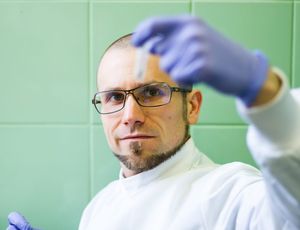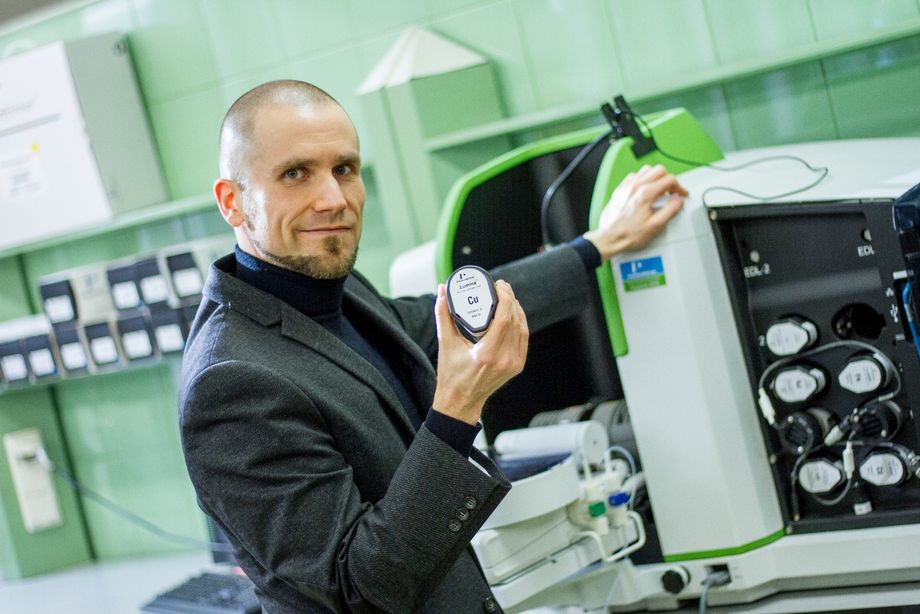
In an article published in the Journal of Applied Ecology, Dr Michał Filipiak from the JU Institute of Environmental Sciences discusses the importance of choosing a nutritious blend of nectars from selected plant species in order to properly feed bee larvae.
‘We are very careful with the food we choose for our own babies, but we seem to forget that the factors responsible for the quality of any diet are universal for the entire animal kingdom. When we choose the nectar that we’re going to feed the bees, we’re only taking into account the quantity of food they’ll produce, but not its quality’, says the author of the article.
The researcher has investigated if the quality (nutritional value) of various types of nectar can affect growth and development of wild bee larvae. It turned out that plants we deem plentiful sources of nectar and pollen can adversely affect bee populations, hampering the development of larvae because of insufficient quality.
The biologist based his work on ecological stoichiometry – a relatively new method in environmental biology. It allowed for the first comparison of bee larvae needs with the nutritional value of a number of plants in scientific literature. Ecological stoichiometry relies upon one of the most fundamental laws of nature: conservation of mass. According to that law, chemical compounds, unlike organic compounds, are immutable: they cannot be turned into other atoms or produced by animals, including bees. Every living organism is built in accordance with a very precise chemical ‘recipe’, unique to every species. In consequence, inadequate amount of particular molecules prevents the organism from developing properly. Therefore, the growth of every larva into a healthy adult bee is directly related to the quality of nourishment it receives, and that, in turn, reflects on the vitality and longevity of the entire population.
‘Currently, we’re focused on providing the bees with high energy food, but we’re not testing it for quality. Such diet negatively impacts the development of their larvae, and consequently – their population in a given area. We need to stop judging plants’ benefits solely on the basis of how much nectar it can produce. We also need to differentiate between honeybees and wild bees. Wild bees cannot sustain themselves entirely on plants we use to feed the domesticated ones’, explained Dr Filipiak.
Nectar gives grown bees the energy they need to work. Pollen is used chiefly as building material from which the larvae create their own organisms. To develop in a healthy way, they need high quality pollen, rich with phosphorus, sodium, manganese, potassium, iron, calcium, nitrogen, zinc, and copper. Molecules containing atoms of these elements are used to build their tissues and organs, protect them against pathogens, regulate their physiology, and to generally keep their organisms in good condition. Unfortunately, we define bee-friendly plants based on their the amount of food they produce and the frequency of visits by adult bees seeking nourishment. In consequence, protective measures aimed to help wild bees are not effective.
‘In my paper, I have proved that improving bees’ diet will take more than just sowing plants that produce a lot of nectar and are often visited by pollinators. It’s important to give the bees access to high quality pollen to ensure a balanced diet for their larvae. We need to keep this in mind when designing bee-friendly gardens and green areas around cities’, said Dr Filipiak.
The publication shows that several types of plants that are commonly thought of as bee-friendly are not suitable for wild bees, such as lavender, poppy, dandelion, thistle, sunflower, rapeseed, and maize (the latter three being cultivated on large areas as monocultures). Conversely, some of the plants that have a high quality pollen are broad bean, clover, St John’s wort, charlock mustard, eastern black walnut, and some types of willows. Since an earlier paper shows similar results, but in regards to honeybees, we can safely assume this holds true for all bees.
The paper contains data about 62 species of plants. It is the first publication in the field with such an extensive scope of research. In Poland alone, there are about 3,000 pollen producing plants and nearly 500 species of bees with varying dietary requirements. As we can see, though much needed, the paper is still a drop in the ocean.
The article was based on Dr Michał Filipiak’s publication entitled Key pollen host plants could provide balanced diets for wild bee larvae - a lesson for planting flower strips and hedgerows, published in the Journal of Applied Ecology in 2019.

Photo: atomic absorption spectrometer used by Dr Michał Filipiak to test the quality of pollen.





